
The Australian Alps is a mountain range in southeast Australia. It comprises an interim Australian bioregion, and is the highest mountain range in Australia. The range straddles the borders of eastern Victoria, southeastern New South Wales, and the Australian Capital Territory. It contains Australia's only peaks exceeding 2,000 m (6,600 ft) in elevation, and is the only bioregion on the Australian mainland in which deep snow falls annually. The range comprises an area of 1,232,981 ha.

The Black Friday bushfires of 13 January 1939, in Victoria, Australia, were part of the devastating 1938–1939 bushfire season in Australia, which saw bushfires burning for the whole summer, and ash falling as far away as New Zealand. It was calculated that three-quarters of the State of Victoria was directly or indirectly affected by the disaster, while other Australian states and the Australian Capital Territory were also badly hit by fires and extreme heat. As of 3 November 2011, the event was one of the worst recorded bushfires in Australia, and the third most deadly.
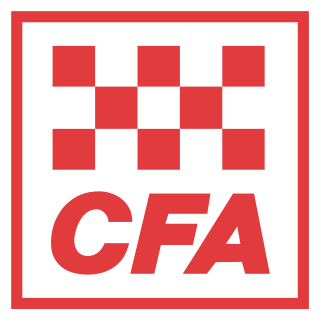
The Country Fire Authority (CFA) is a volunteer fire service responsible for fire suppression, rescues, and response to other accidents and hazards across most of the state Victoria, Australia. CFA comprises over 1,200 brigades organised in 21 districts, and shares responsibility for fire services with Fire Rescue Victoria, which employs full-time paid firefighters in major urban areas; and Forest Fire Management Victoria (FFMV), which manages fire prevention and suppression on Victoria's public lands. CFA operations and equipment are partly funded by the Victorian Government through its Fire Services Levy, and supplemented by individual brigades' fundraising for vehicles and equipment.
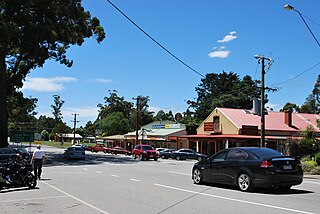
Kinglake is a town in Victoria, Australia, 56 km (35 mi) north-east of Melbourne's Central Business District. Its local government areas are the Shires of Murrindindi and Nillumbik. At the 2016 Census, Kinglake had a population of 1,536.
Murray Neil Comrie AO, APM, known as Neil Comrie, is a former Australian police officer. He was Chief Commissioner of Victoria Police from 1993 to 2001.

AusNet Services is an Australian energy company, which is listed on the Australian Securities Exchange (ASX) and the Singapore Exchange (SGX). AusNet Services is currently owned 31.1% by Singapore Power, 19.9% by State Grid Corporation of China and the other 49% is publicly owned. Singapore Power is wholly owned by Singapore investment fund Temasek which in turn is wholly owned by the Singapore government. State Grid is the state-owned electric utility monopoly of China and the largest utility company in the world.

The Australian bushfire season ran from late December 2008 to April/May 2009. Above average rainfalls in December, particularly in Victoria, delayed the start of the season, but by January 2009, conditions throughout South eastern Australia worsened with the onset of one of the region's worst heat waves. On 7 February, extreme bushfire conditions precipitated major bushfires throughout Victoria, involving several large fire complexes, which continued to burn across the state for around one month. 173 people lost their lives in these fires and 414 were injured. 3,500+ buildings were destroyed, including 2,029 houses, and 7,562 people displaced.

The state of Victoria in Australia has had a long history of catastrophic bushfires, the most deadly of these, the Black Saturday bushfires of 2009 claiming 173 lives. Legislation, planning, management and suppression are the responsibilities of the Victorian State Government through its departments and agencies including the Country Fire Authority (CFA) and the Department of Environment, Land, Water and Planning (DELWP).

Bushfires in Australia are a widespread and regular occurrence that have contributed significantly to shaping the nature of the continent over millions of years. Eastern Australia is one of the most fire-prone regions of the world, and its predominant eucalyptus forests have evolved to thrive on the phenomenon of bushfire. However, the fires can cause significant property damage and loss of both human and animal life. Bushfires have killed approximately 800 people in Australia since 1851, and billions of animals.

The Black Saturday bushfires were a series of bushfires that either ignited or were already burning across the Australian state of Victoria on and around Saturday, 7 February 2009, and were among Australia's all-time worst bushfire disasters. The fires occurred during extreme bushfire weather conditions and resulted in Australia's highest-ever loss of human life from a bushfire, with 173 fatalities. Many people were left homeless as a result.

Kilmore East is a locality in the Australian state of Victoria, 65 kilometres north of Melbourne. At the 2016 census, Kilmore East had a population of 417.

The 1943–44 Victorian bushfire season was marked by a series of major bushfires following severe drought conditions in the state of Victoria in Australia. The summer of 1943–44 was the driest summer ever recorded in Melbourne with just 46 mm falling, a third of the average for the period. Between 22 December and 15 February 51 people were killed, 700 injured, and 650 buildings were destroyed across the state. Many personnel who would have been normally available for fire fighting duties had been posted overseas and to remote areas of Australia during World War II.

A bushfire season occurred predominantly from June 2009 to May 2010. Increased attention has been given to this season as authorities and government attempt to preempt any future loss of life after the Black Saturday bushfires during the previous season, 2008–09. Long range weather observations predict very hot, dry and windy weather conditions during the summer months, leading to a high risk of bushfire occurrence.

The Black Saturday bushfires were a series of fires that ignited across the Australian state of Victoria during extreme weather conditions on 7 February 2009. Burning around 450,000 ha for over a month, the fires destroyed over 2,100 homes, destroyed several regional towns and were fought by over 5,000 firefighting personnel. The Fires devastated many.
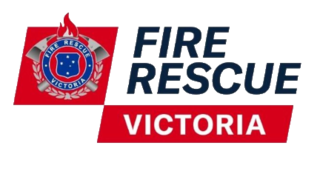
Fire Rescue Victoria (FRV) is a fire and rescue service in the state of Victoria, Australia, that provides firefighting, rescue, HAZMAT and Emergency Medical Response services in areas of metropolitan Melbourne and major regional centres throughout Victoria.
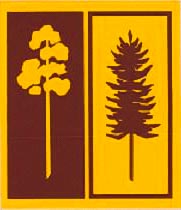
The Forests Commission Victoria (FCV) was the main government authority responsible for management and protection of State forests in Victoria, Australia between 1918 and 1983.
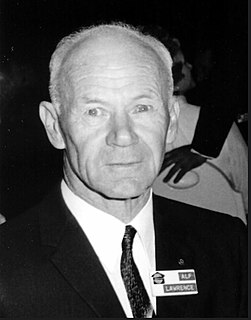
Alfred (Alf) Oscar Platt Lawrence, OBE was an outstanding Victorian forester and community leader.

Leonard Edward Bishop (Len) Stretton (1893–1967) was a notable Judge and Royal Commissioner in the State of Victoria, Australia.

The 2019–20 Australian bushfire season, was a period of bushfires in many parts of Australia, which, due to its unusual intensity, size, duration, and uncontrollable dimension, is considered a megafire.
The Royal Commission into National Natural Disaster Arrangements, also referred to as the Bushfires Royal Commission, was a royal commission established in 2020 by the Australian government to inquire into and report upon natural disaster management coordination as it related to the 2019–20 Australian bushfire season. The Commission was charged with the responsibility of examining the coordination, preparedness for, response to and recovery from disasters, as well as improving resilience and adapting to changing climatic conditions and mitigating the impact of natural disasters.


















